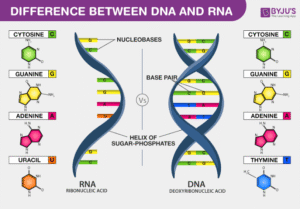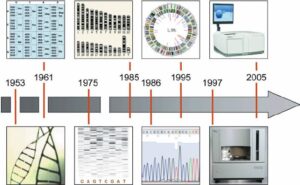Back to: MICROBIOLOGY 500 LEVEL
Welcome to class!
Hello, superstar! It’s great to have you here once again. I know you’re committed to growing your knowledge and skills, and I want you to know—this is where it all starts. Today’s lesson is like opening a toolbox full of powerful scientific tools that help us understand and manipulate life at the molecular level. Let’s learn how scientists like you use these tools to do amazing things like diagnosing diseases, creating vaccines, and improving agriculture—all while making Africa proud.
Overview Of Molecular Tools And Milestones
Let’s start with a simple question: If you wanted to fix a faulty generator, would you just look at it and hope for the best? Of course not! You’d need the right tools—spanners, testers, maybe even a voltage metre. Similarly, when scientists want to understand or modify living organisms at the genetic level, they use special molecular tools. These tools help us see, copy, cut, and edit DNA, RNA, and proteins—the building blocks of life.

What Are Molecular Tools?
Molecular tools are techniques or technologies that allow us to study and work with genes and proteins. They’re like the equipment in a microbiologist’s toolbox. Whether we’re trying to identify bacteria causing an illness in a Lagos hospital or researching drought-resistant crops in a Nigerian university lab, these tools make it possible.
Some important molecular tools include:
1. PCR (Polymerase Chain Reaction)
Think of PCR like a photocopy machine for DNA. It helps scientists make millions of copies of a small DNA sample. This is very useful in forensic investigations, COVID-19 testing, and disease research. If someone has just a tiny bit of virus in their blood, PCR helps us see it clearly.
2. Gel Electrophoresis
This tool is used to separate DNA fragments by size using an electric current. It works almost like sorting grains by size in a sieve—smaller fragments move faster than larger ones. Scientists use it to check the results of DNA experiments.
3. Restriction Enzymes
These are like molecular scissors that cut DNA at specific points. This allows scientists to isolate or remove parts of DNA. They are very useful in genetic engineering.
4. CRISPR-Cas9
One of the most exciting tools in recent history, CRISPR works like a GPS-guided knife. It allows scientists to cut and edit genes with amazing accuracy. It’s already helping in curing genetic diseases and improving crops.
Major Milestones in Molecular Biology
Let’s quickly look at some key moments in the history of molecular biology:
1953 – Discovery of the DNA double helix structure by Watson and Crick, built on Rosalind Franklin’s X-ray work. This changed everything.
1973 – First successful gene cloning using restriction enzymes.
1983 – Invention of PCR by Kary Mullis, which transformed genetic studies forever.

2003 – Completion of the Human Genome Project—scientists mapped all the genes in human DNA.
2012 – Introduction of CRISPR-Cas9 as a gene editing tool.
Each of these milestones brought science closer to solving problems in health, environment, and agriculture.
Summary
- Molecular tools help scientists study and manipulate genes and proteins.
- Examples include PCR, gel electrophoresis, restriction enzymes, and CRISPR-Cas9.
- Key milestones include the discovery of DNA’s structure, gene cloning, PCR invention, the Human Genome Project, and CRISPR development.
Evaluation
- What is PCR, and why is it important?
- Name two molecular tools and explain what they do.
- Mention two major milestones in molecular biology and their significance.
You’re growing into a scientist the world will be proud of! Every tool you learn about brings you closer to solving real-world problems—right here in Nigeria and across Africa. Keep going strong; Afrilearn is right here with you, helping you shine brighter every day. Can’t wait to learn with you again in the next lesson!
